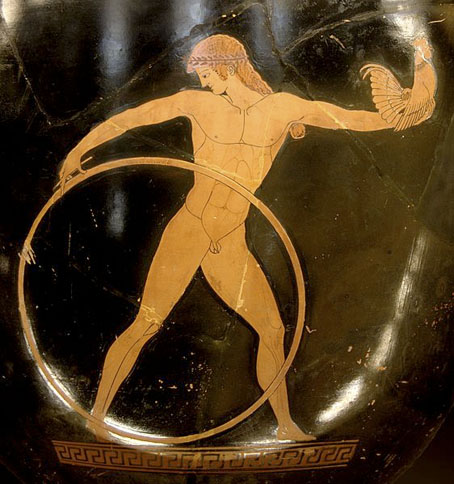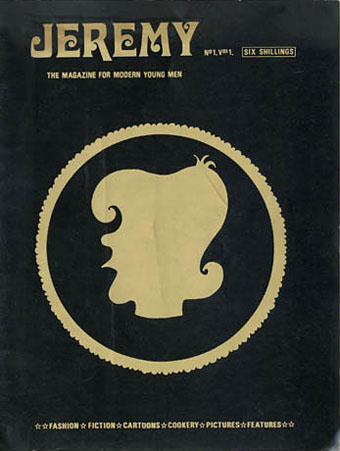
Jeremy, vol. 1, no. 1.
To note the 50th anniversary this month of the (partial) decriminalisation of homosexual acts in England and Wales I thought I’d write something about Jeremy magazine, a short-lived publication launched in the UK in 1969. The magazine is notable not for the quality of its contents, which seem slight considering the high cover price of six shillings, but for being the first British magazine aimed at an audience of gay men that wasn’t either porn, a dating mag or a political tract. I had planned to write something about Jeremy at least two years ago when the blog was still a daily thing but detailed information about the magazine’s history is hard to find. This is frustrating but not too surprising. The anniversary of the change in the law has prompted a number of exhibitions and events devoted to Britain’s gay history but little of that history ever seems to travel beyond academic circles unless a notable life story—Quentin Crisp or Alan Turing, say—is involved. As with so many aspects of British culture, the conversation is dominated by America: the main campaigning organisation in the UK, Stonewall, is named after an American riot; the LGBT initialism is an American invention, as is the rainbow flag (the latter, as I’ve said before, being fine as a flag but—with its multiple colours—hopeless as a symbol). More Britons will know the name Harvey Milk than they do Edward Carpenter (1844–1929) or Allan Horsfall (1927–2012) even though Carpenter and Horsfall devoted years of their lives campaigning for gay men to be treated equally under the law in the Britain. Horsfall’s Campaign for Homosexual Equality pioneered the push for gay rights in Britain, the first official meeting taking place in Manchester in 1964. The Sexual Offences Act of 1967 seemed in later years like a poor compromise but when the alternative being offered was celibacy or the risk of a prison sentence it was a start. (Scotland, however, had to wait until 1980 for the same change in the law while in Northern Ireland sex between men was illegal until 1982.) Two years after decriminalisation, not only was Jeremy being launched but OZ magazine devoted a portion of its 23rd issue (September, 1969) to gay material. Jeremy advertised its early issues in OZ and IT (see below).
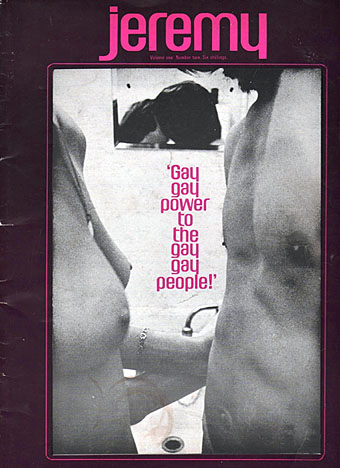
Jeremy, vol. 1, no. 2.
Jeremy‘s status as the first gay magazine in Britain might be more acknowledged if its origins weren’t so obscure. The magazine is mentioned in books such as British Queer History (edited by Brian Lewis) and The Culture of Queers by Richard Dyer but never in any detail. Dyer refers to the title as a bisexual magazine which it may have appeared to be from the covers but this is contradicted by the ads. Peter Burton, editor of the later issues, claimed that everyone involved knew that gay men were the primary audience. Using bisexuality as a kind of fig leaf was less a case of cold feet than a means by which the magazine might be smuggled under the radar of those who would otherwise object to its existence. Britain may have been slightly ahead of the US in its tolerance of gay men but the lack of a written constitution meant that publishers, especially those regarded as subversive or disreputable, needed to tread carefully in the 1960s and 70s as OZ and Nasty Tales discovered.
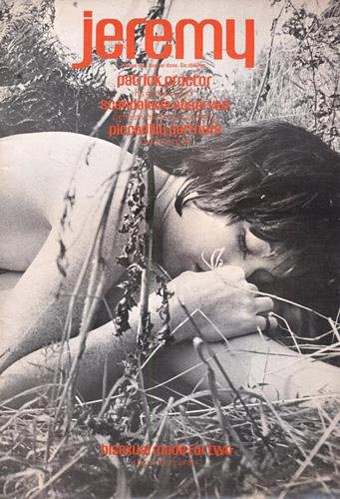
Jeremy, vol. 1, no. 3.
The precarious legal position means that Jeremy‘s visuals are relatively innocuous, with sporadic nudity but nothing that might be regarded as pornography. The magazine’s features were also relatively innocuous although the novelty of publishing anything overtly gay meant that a piece about entertaining at home would carry a frisson that would be absent in other magazines. Later issues included encounters with minor celebrities including an early interview with David Bowie which has at least preserved the magazine’s name in Bowie histories. Bowie had the opportunity to be open about his sexuality but wisely waited until his profile had risen and he could make a declaration to a larger audience.
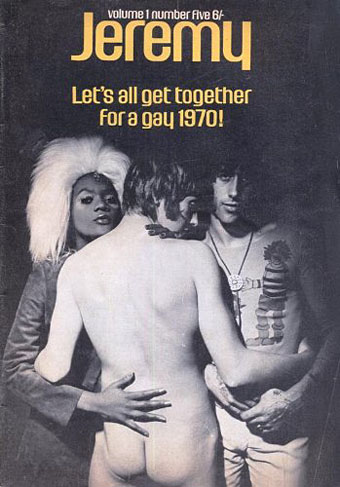
Jeremy, vol. 1, no. 5.
A few more covers and some interior pages follow. As usual, if anyone has further information to contribute then please leave a comment. My thanks to Rex for sending the information about Peter Burton’s editorship of the magazine.
Continue reading “Jeremy, The Magazine for Modern Young Men, 1969”

